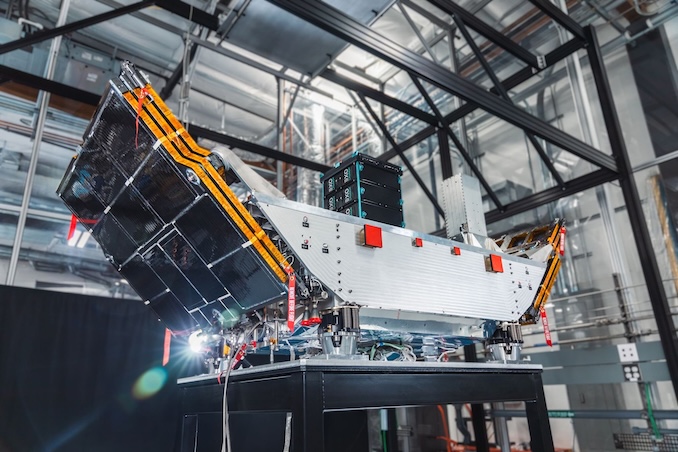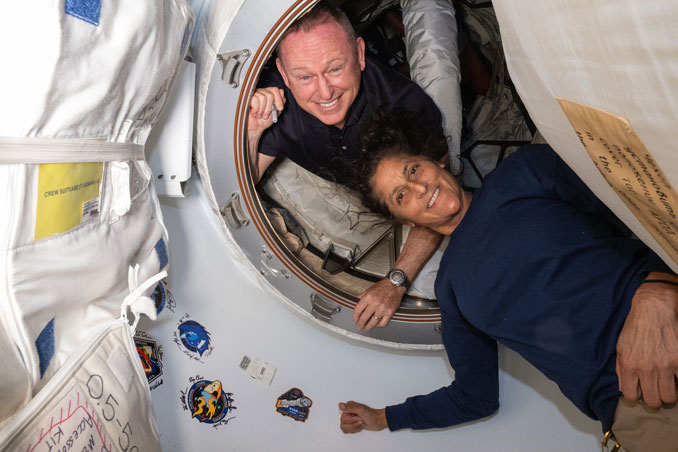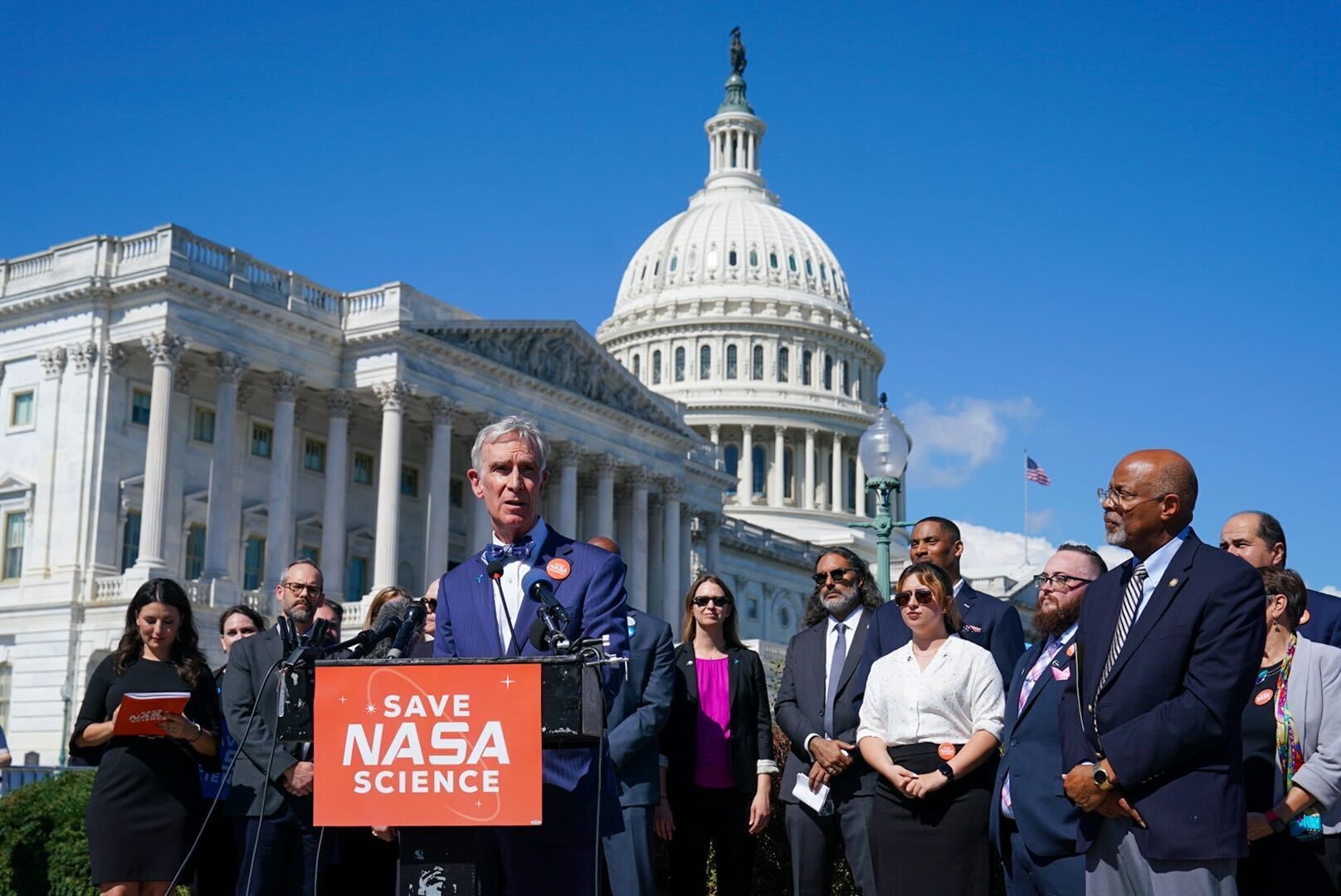Now Reading: Orion spacecraft arrives at VAB ahead of stacking for Artemis 2
-
01
Orion spacecraft arrives at VAB ahead of stacking for Artemis 2
Orion spacecraft arrives at VAB ahead of stacking for Artemis 2
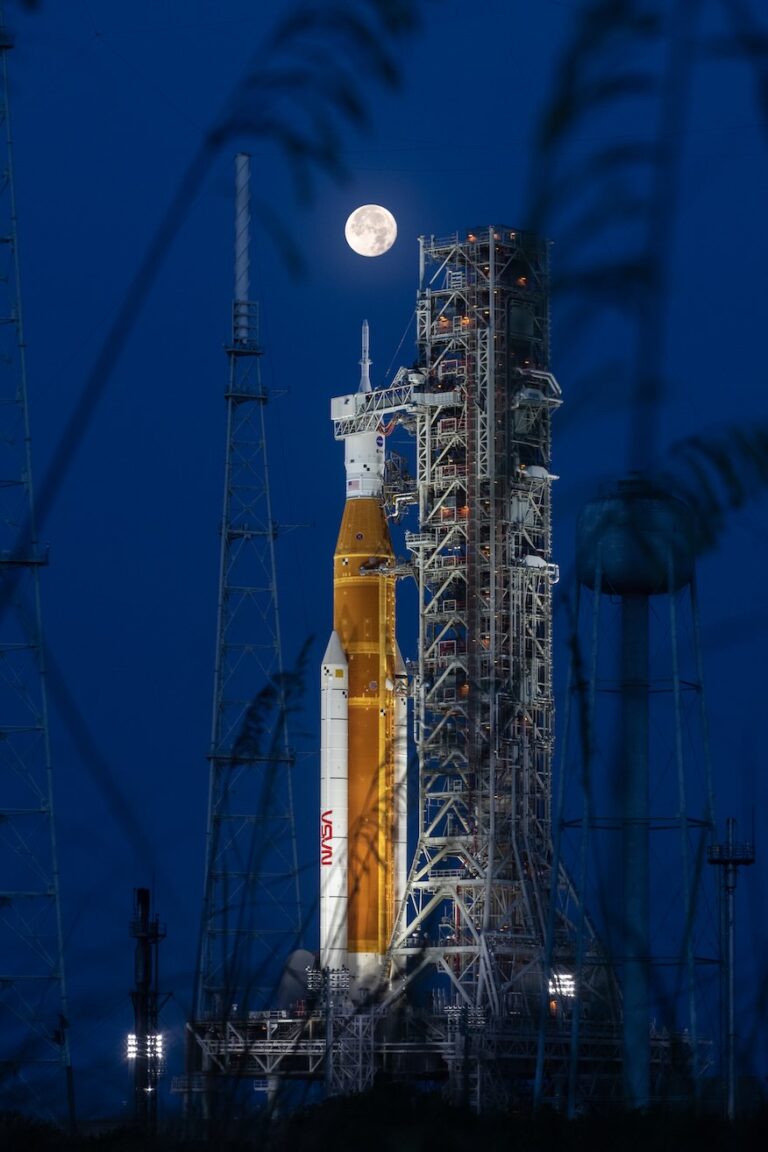
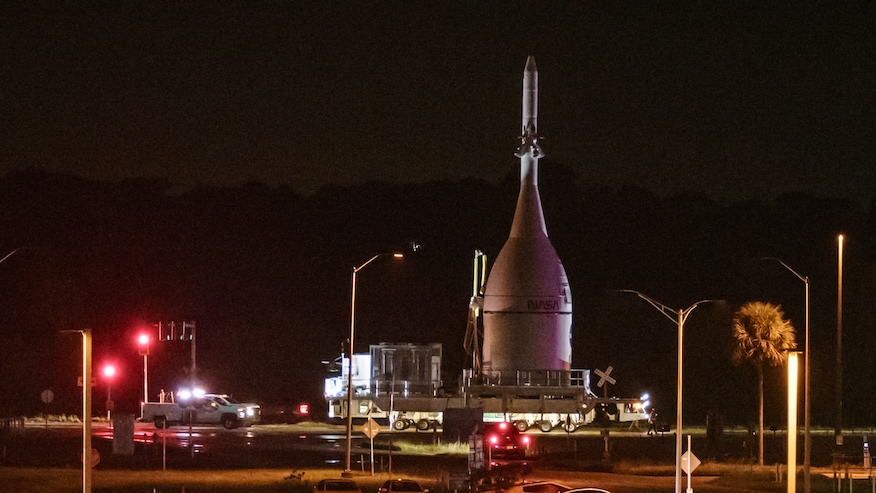
NASA Orion spacecraft made its penultimate terrestrial roadtrip late Thursday evening when it cruised into the Vehicle Assembly Building at the Kennedy Space Center. The next time it hits the road will be atop the fully assembled Space Launch System rocket for final prelaunch preparations for Artemis 2 at the launch pad.
The spacecraft, named “Integrity” by its four-member crew,” slowly made the roughly seven-mile journey from the Launch Abort System Facility to the VAB, arriving at the entrance to High Bay 4 around midnight (0400 UTC). The trek came almost four years to the day after NASA rolled the Orion spacecraft used on the Artemis 1 mission to the VAB.
Unlike that rollout though, this transport came with far less pomp and circumstance, given that the U.S. federal government is on day 16 of a shutdown with many parts of the NASA workforce furloughed.
However, the rollout operation was able to move forward because critical functions related to the Artemis 2, 3 and 4 missions were included in exemptions agreed by the White House for the shutdown that began on Oct. 1.
During a Sept. 22 mission overview briefing at the Johnson Space Center, Charlie Blackwell-Thompson, the Artemis 2 launch director, noted that the Orion Stage Adaptor was set to be stacked as part of the rocket in High Bay 3 the week ahead of the spacecraft’s arrival.
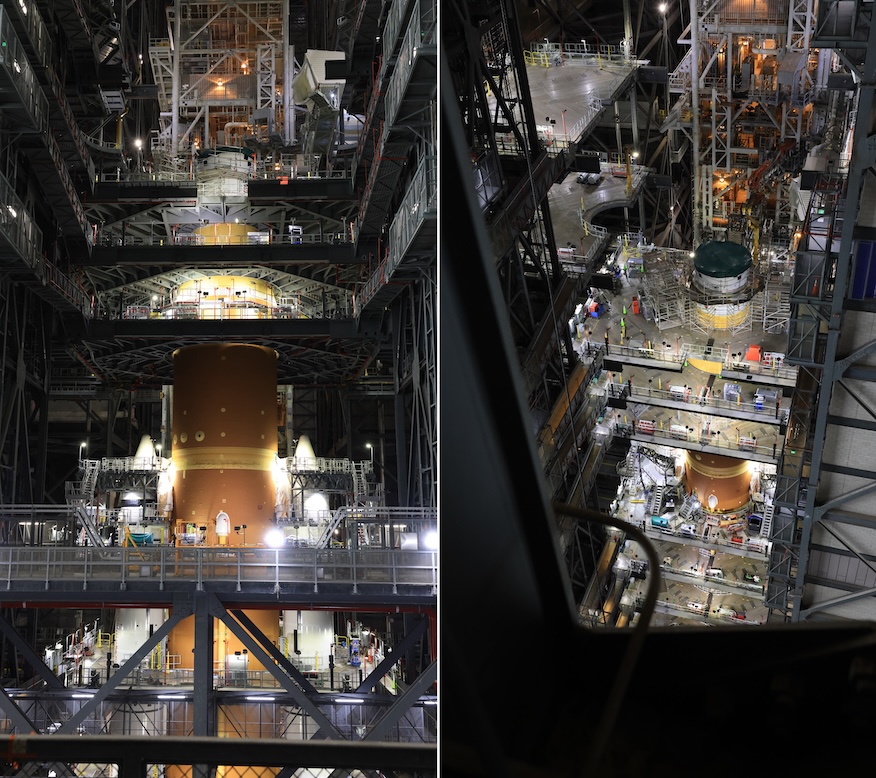
Once Orion is stacked atop the rest of the SLS rocket, that’s when Blackwell-Thompson said the test campaign will really kick into gear. A majority of that work will happen inside the VAB.
She said while some of work will mimic operations seen during the Artemis 1 campaign, like the End-to-End Comm Test and the Interface Verification Test, there are also some new additions that factor in the astronaut element.
“Those new tests consist of the Countdown Demonstration Test, which is about our crewed flight. Back in the shuttle days, we had a similar test that was called TCDT: Terminal Countdown Demonstration Test,” Blackwell-Thompson said.
“That’s where we suit up the crew, they come out, we go through our checklist and our countdown. They’ll enter the ship, we’ll get them strapped in, we’ll do comm checks, we’ll do the configuration of the crew module and we’ll count down to inside of terminal count before we have a planned stop.”
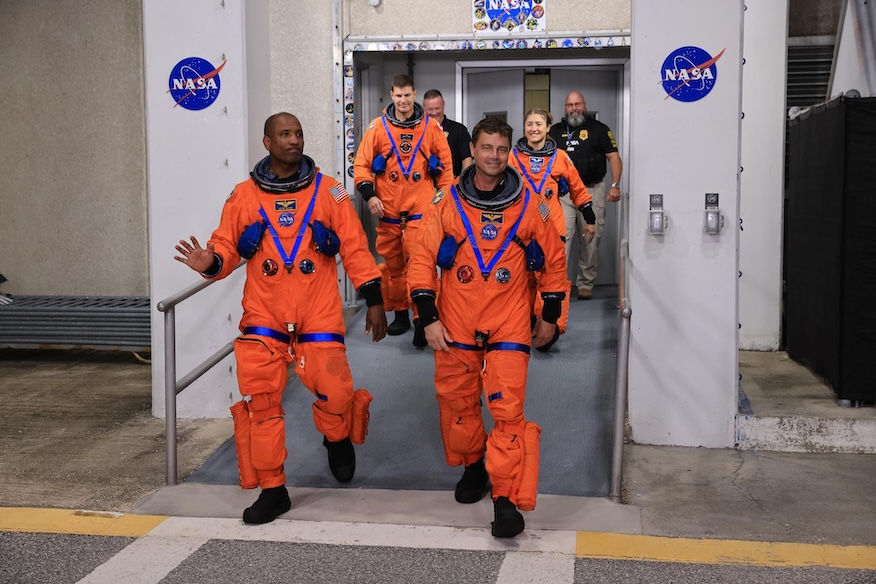
Image: NASA/Kim Shiflett
During that stop, Blackwell-Thompson said they will also do an egress demonstration, which will wrap up part one of that testing campaign. Once the Countdown Demonstration Test (CDDT) Part 1 is complete, teams will conduct a test of the flight termination system and begin final vehicle closeouts.
“And when all of that is done, we’ll get ready to roll out from the VAB to the pad,” Blackwell-Thompson said, referring to the roughly four-mile journey. “Once we get to the launch pad, we will make the connections between the Mobile Launcher and the pad. We have a little bit of testing that we will do out there as well.”
Those pad-connected tests at Launch Complex 39B involve configuring the emergency egress system, a series of slide wire baskets that would be able to allow the closeout crew and the astronauts to quickly get away from the rocket in an emergency, prior to the arming of the Launch Escape System. Blackwell-Thompson said this is the second part of the CDDT.
After that it’s time for the wet dress rehearsal.
“That’ll be a full tanking of the vehicle, core stage and upper stage. We’ll get into a terminal count, and again, we will count down inside a terminal count to about the 29-second point and then we will terminate that test,” she said. “We’ll go review the data and a few days later, we’ll get into launch countdown.”
Blackwell-Thompson said the work at the pad is a roughly 18-day process with a few contingency days built in. The wet dress rehearsal happens near the end of that flow.
Like Artemis 1, launch countdown itself is a two-day process. Blackwell-Thompson said after the wet dress rehearsal, the vehicle won’t be rolled back to the VAB, barring some major issue that can’t be resolved at the pad.
This first crewed flight of the Artemis program is set to launch no earlier than Feb. 5 from the Kennedy Space Center. Following previous delays due to ongoing analysis of the heat shield’s performance seen on the Artemis 1 mission, NASA set a goal of launching no later than April 2026 with aspirations to fly sooner than that.
Teams are still working to nail down the specific launch windows available to them in each month, but generally, they range from four to eight days.
Depending on exactly when they launch, the four-person crew consisting of three NASA astronauts and a Canadian Space Agency astronaut will spend roughly ten days in the confines of the Orion capsule, blazing a path for future crews to train for missions that will take them back to the Moon’s surface.
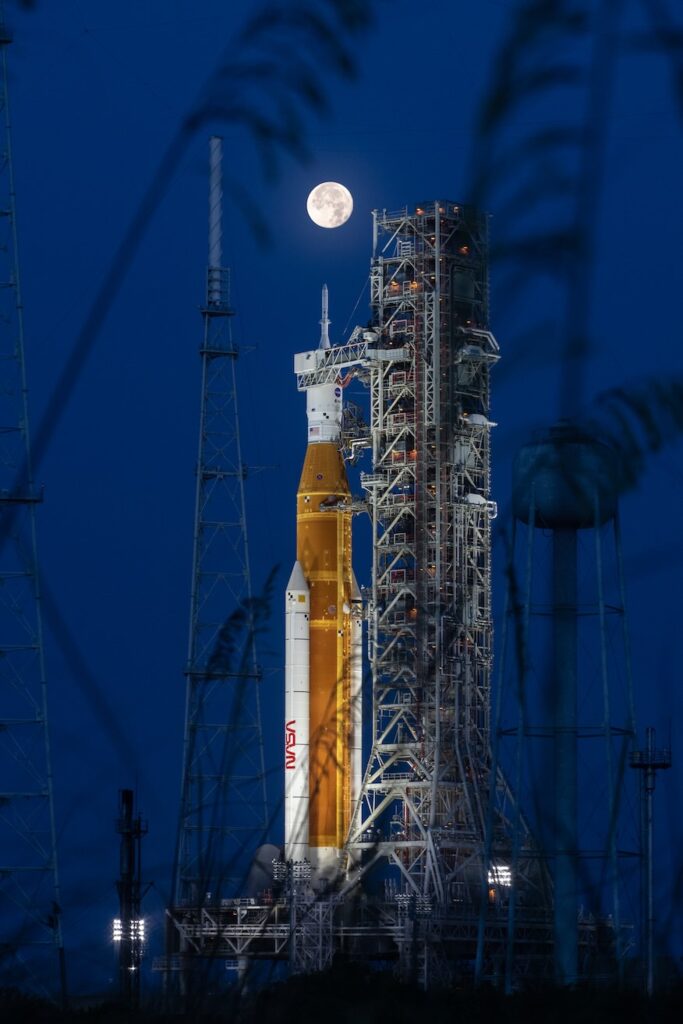
Stay Informed With the Latest & Most Important News
Previous Post
Next Post
-
 012024 in Review: Highlights from NASA in Silicon Valley
012024 in Review: Highlights from NASA in Silicon Valley -
 02Panasonic Leica Summilux DG 15mm f/1.7 ASPH review
02Panasonic Leica Summilux DG 15mm f/1.7 ASPH review -
 03How New NASA, India Earth Satellite NISAR Will See Earth
03How New NASA, India Earth Satellite NISAR Will See Earth -
 04And Thus Begins A New Year For Life On Earth
04And Thus Begins A New Year For Life On Earth -
 05Astronomy Activation Ambassadors: A New Era
05Astronomy Activation Ambassadors: A New Era -
06SpaceX launch surge helps set new global launch record in 2024
-
 07Space Force plans new ‘Futures Command’ amid pressure to speed up modernization
07Space Force plans new ‘Futures Command’ amid pressure to speed up modernization













